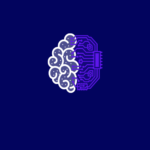ZeroGPT is an innovative AI text detection tool designed to identify whether a piece of text was generated by an AI language model, such as GPT-3 or GPT-4, or written by a human. The technology behind ZeroGPT leverages advanced algorithms and linguistic analysis to distinguish between AI-generated and human-written content with impressive accuracy.
Core Mechanisms
Perplexity and Burstiness: The primary method ZeroGPT uses to detect AI-generated text involves analyzing two key metrics: perplexity and burstiness.
Perplexity measures the randomness of a text. If the text appears highly random or chaotic to a language model, it is more likely to be human-written. Conversely, text that is very familiar to the AI model will have low perplexity, indicating it might be AI-generated.
Burstiness refers to the variability in sentence structure and length. Human writers tend to vary their sentence length and structure, resulting in “bursts” of complexity. AI-generated text often maintains a consistent pattern, lacking the variability typical of human writing.
-Linguistic Patterns ZeroGPT scans for patterns that are common in AI-generated text but rare in human writing. For instance, AI text can often exhibit repetitive sentence structures and uniform length, which ZeroGPT can detect and flag.
Accuracy and Performance
ZeroGPT boasts an accuracy rate of over 98% for short texts, making it highly reliable in distinguishing between human and AI-generated content. However, its performance can vary with longer and more complex texts, where accuracy ranges from 70% to 94%.
Applications
ZeroGPT has a wide array of applications, making it a valuable tool for various sectors:
– Education: Educators can use ZeroGPT to detect AI-generated assignments, ensuring academic integrity.
– Content Creation: Writers and publishers can use the tool to verify the originality of their content, providing transparency to their readers.
– Research: Researchers can analyze writing patterns and differences between human and AI text, contributing to advancements in AI detection technology.
Limitations
While ZeroGPT is a powerful tool, it is not without limitations:
– False Positives/Negatives: There can be instances where ZeroGPT mistakenly identifies human-written text as AI-generated and vice versa.
– Complex Texts: The tool’s accuracy can decrease with longer and more complex texts, which are harder to analyze and classify correctly.
– Evolving AI: As AI models evolve and improve, ZeroGPT needs continuous updates to keep pace with the latest advancements in AI text generation.
Future of ZeroGPT
The future of ZeroGPT looks promising, with ongoing research and development aimed at enhancing its accuracy and expanding its capabilities. The tool is expected to become more adept at handling multilingual texts, which is crucial in our increasingly globalized digital landscape. Additionally, API integration allows developers to incorporate ZeroGPT’s detection capabilities into various applications, enhancing content verification across platforms.
Conclusion
ZeroGPT is a cutting-edge tool designed to detect AI-generated text with high accuracy by analyzing perplexity, burstiness, and linguistic patterns. Its applications span education, content creation, and research, making it a valuable asset in ensuring the integrity and originality of written content. While it faces some challenges, ongoing advancements promise to enhance its capabilities, making it an essential tool in the evolving landscape of AI and content creation.
